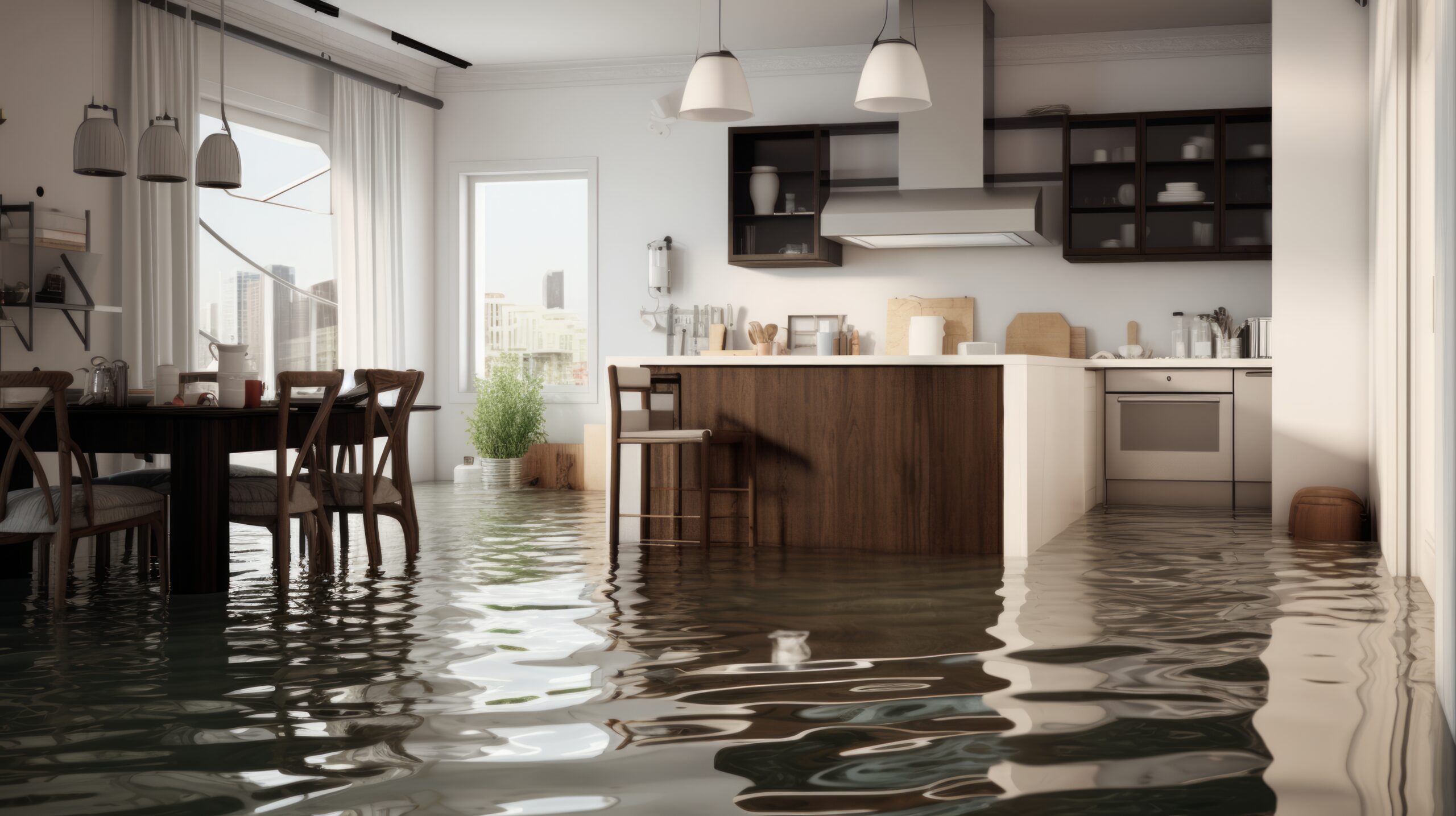Water damage is a serious issue that can compromise the safety, structure, and value of your home. For homeowners in Florida, where heavy rain, humidity, and storms are common, recognizing the signs of water damage quickly is critical to preventing costly repairs and maintaining a healthy living environment. Here’s a detailed guide on what signs to look for and where to check for potential water damage in your home.
-
Water Stains and Discoloration
What to look for:
– Brown, yellow, or dark stains on ceilings, walls, or around windows and doors.
– Circular or irregularly shaped spots on drywall, indicating water infiltration.
– Ceiling stains that expand over time, suggesting an active leak.
Where to check:
– Ceilings under bathrooms, kitchens, or rooflines.
– Around windows, doors, and skylights where leaks may occur.
Why it matters:
Water stains can indicate a persistent leak or water buildup. Left untreated, this can lead to structural issues and mold growth.
-
Damp or Soft Spots
What to look for:
– Soft or spongy drywall when pressed lightly.
– Warped or buckling flooring in wood, laminate, or carpeted areas.
– Moisture in corners, baseboards, or areas where water tends to accumulate.
Where to check:
– Around sinks, toilets, bathtubs, and showers.
– Near exterior walls and in basements prone to flooding or water seepage.
– Under kitchen appliances like refrigerators, dishwashers, or washing machines.
Why it matters:
Soft spots and warping indicate that water has penetrated the material, potentially weakening its integrity. Immediate attention can prevent further damage and mold growth.
-
Peeling or Bubbling Paint and Wallpaper
What to look for:
– Paint that blisters or peels away from the wall.
– Bubbling wallpaper or sections that are detaching from the wall surface.
Where to check:
– Bathrooms and kitchens, where humidity is often high.
– Exterior walls that may have leaks or poor drainage.
Why it matters:
Peeling or bubbling indicates that moisture is trapped behind the paint or wallpaper. This is often a sign of a hidden leak that needs to be addressed.
-
Mold and Mildew Growth
What to look for:
– Black, green, or white spots that appear in moist areas.
– Musty odors that indicate the presence of mold spores.
Where to check:
– Bathrooms, basements, and attics, where humidity levels tend to be high.
– In corners, under sinks, and around HVAC units.
– Inside walls or behind wallpaper if discoloration or a musty smell is present.
Why it matters:
Mold and mildew can cause health issues and exacerbate allergies and asthma. It also weakens the materials it grows on and can lead to costly remediation if left unchecked.
-
Cracks in the Walls or Ceiling
What to look for:
– Hairline cracks that appear around windows, doors, or in ceilings.
– Cracks that grow larger over time or seem to change after heavy rain.
Where to check:
– Exterior walls and ceilings, particularly those near the roofline.
– Basement walls, where water seepage or hydrostatic pressure may cause cracks.
Why it matters:
Cracks can indicate a structural issue caused by water infiltration. They may also signal shifting or settling due to excess moisture.
-
Standing Water or Puddles
What to look for:
– Puddles of water that don’t dry up or keep reappearing.
– Damp spots that persist on the floor, even after being cleaned.
Where to check:
– Basements and crawl spaces, where water often accumulates.
– Around windows, doors, and exterior entryways after heavy rain.
– Under HVAC units and near drains.
Why it matters:
Standing water can lead to mold growth, wood rot, and foundational issues if not promptly addressed.
-
Rust or Corrosion on Metal Surfaces
What to look for:
– Rusty nails, screws, or metal fixtures.
– Corrosion on pipes, faucets, or plumbing connections.
Where to check:
– Around plumbing fixtures, HVAC units, and water heaters.
– Basement pipes and other moisture-prone areas.
Why it matters:
Rust and corrosion indicate long-term exposure to moisture. This can weaken metal components and lead to plumbing leaks or failures.
-
Increased Utility Bills or Water Usage
What to look for:
– Sudden spikes in water bills, which may suggest a hidden leak.
– Constant running of the water meter when no water is being used.
Where to check:
– Inspect plumbing lines and fixtures throughout the house for hidden leaks.
Why it matters:
Undetected leaks waste water and money. Identifying the source quickly can save on utility costs and prevent extensive water damage.
-
Sagging Ceilings or Walls
What to look for:
– Ceilings that sag or bow downward.
– Walls that bulge out due to water accumulation behind them.
Where to check:
– Basements, attics, and any areas beneath a potential leak source.
Why it matters:
Sagging structures may indicate a serious water intrusion problem that requires immediate professional intervention.
Key Takeaway: Stay Proactive to Prevent Water Damage
Water damage is a serious concern for Florida homeowners due to the state’s frequent storms and high humidity. Regular inspections, both inside and outside your home, can help you catch signs of water damage early and prevent costly repairs. If you notice any of these warning signs, it’s essential to address the issue promptly and consult with a licensed professional if needed.
By staying vigilant and proactive, you can protect your home and maintain a safe, dry, and comfortable living environment. For professional assistance with roofing inspections or repairs, contact a trusted local contractor today!

